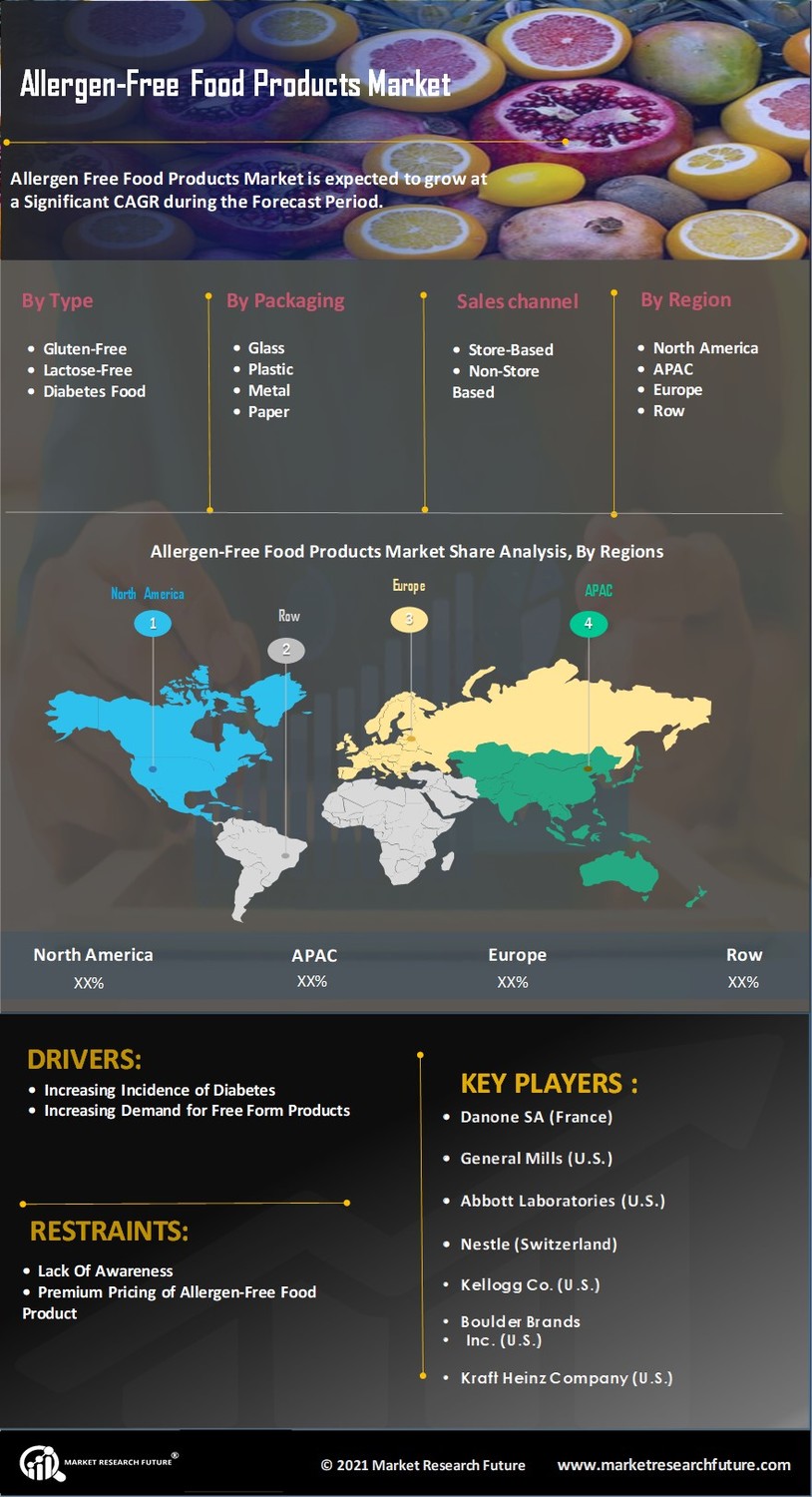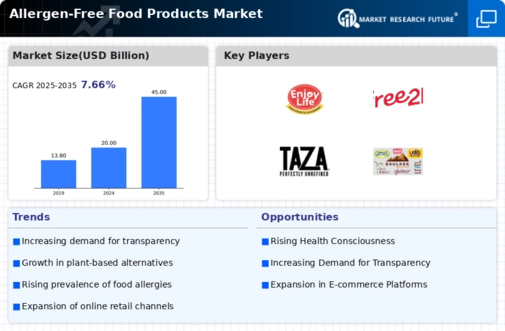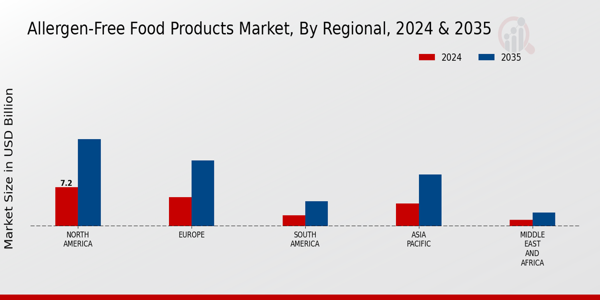Market Growth Projections
The Global Allergen-Free Food Products Market Industry is poised for substantial growth, with projections indicating a market value of 20.0 USD Billion in 2024 and an anticipated increase to 45 USD Billion by 2035. This growth trajectory suggests a compound annual growth rate (CAGR) of 7.67% from 2025 to 2035. Factors contributing to this growth include rising consumer awareness of food allergies, regulatory support, and the increasing demand for healthier food options. As the market evolves, it is likely that new entrants will emerge, further diversifying the product offerings available to consumers.
Innovative Product Development
The Global Allergen-Free Food Products Market Industry is witnessing a surge in innovative product development as manufacturers strive to meet consumer demands. Companies are increasingly investing in research and development to create allergen-free alternatives that do not compromise on taste or texture. This innovation is evident in the rise of plant-based and alternative protein products, which cater to consumers with dietary restrictions. As a result, the market is expected to expand significantly, with projections indicating a value of 20.0 USD Billion in 2024. This focus on innovation not only addresses consumer needs but also positions companies competitively in a growing market.
Consumer Awareness and Education
Heightened consumer awareness regarding food allergies and intolerances significantly influences the Global Allergen-Free Food Products Market Industry. Educational campaigns by health organizations and advocacy groups have led to increased knowledge about the risks associated with allergens. As a result, consumers are actively seeking allergen-free products, which has prompted food manufacturers to adapt their offerings. This shift is reflected in the market's projected growth, with an expected value of 45 USD Billion by 2035. The emphasis on transparency in labeling and ingredient sourcing further enhances consumer trust, thereby driving market expansion.
Regulatory Support and Standards
Government regulations and standards aimed at ensuring food safety play a crucial role in shaping the Global Allergen-Free Food Products Market Industry. Regulatory bodies are increasingly implementing stringent guidelines for allergen labeling and cross-contamination prevention. These measures not only protect consumers but also encourage manufacturers to develop allergen-free products. Compliance with these regulations fosters innovation and enhances product credibility. As the market evolves, it is likely that these regulations will continue to tighten, further propelling the growth of allergen-free options. This regulatory landscape supports the market's anticipated CAGR of 7.67% from 2025 to 2035.
Rising Prevalence of Food Allergies
The increasing incidence of food allergies globally drives the demand for allergen-free food products. According to health organizations, food allergies affect approximately 10 percent of the population in various regions. This growing concern compels manufacturers to innovate and expand their offerings within the Global Allergen-Free Food Products Market Industry. As consumers become more aware of allergens and their potential health impacts, the market is projected to reach 20.0 USD Billion in 2024. This trend indicates a significant shift towards safer food options, prompting retailers to prioritize allergen-free alternatives in their product lines.
Increasing Demand for Healthy Lifestyles
The trend towards healthier lifestyles is a driving force behind the Global Allergen-Free Food Products Market Industry. As consumers become more health-conscious, there is a growing preference for foods that are not only allergen-free but also nutritious. This shift is reflected in the increasing sales of allergen-free snacks, meals, and beverages that cater to health-oriented consumers. The market's growth trajectory suggests that by 2035, it could reach 45 USD Billion, indicating a robust demand for products that align with health and wellness trends. This focus on health is likely to continue influencing consumer purchasing decisions.






